
Review on Black Finish Yamaha NS-6490 Pair of 3-Way Bookshelf Speakers by Virot Teerachetmongk ᠌

Good product for me, no problems at all.
After reading the remarks made by other individuals, I feel compelled to point up the following: "That just doesn't sound right." Many users simply started to hear in the recordings what was inaudible with other acoustics, and they also started to simply understand the difference in the quality of the recordings (and I want to point out that the same quality recorded SD 20-30% in the best case, and the rest can hardly be called quality records). For instance, the lows are not present if they are not present on the recording; if they are, then they are extremely good lows (they do not artificially boost them up like many other inexpensive speakers); People who complain about the sound coming from various types of music centers, audio computers, and entry-level Yamaha Pioneers should be aware of the fact that these sources are genuine and can only produce sounds of that nature, and there is no way for acoustics to alter this; They claim that "certain musical styles sound, while these do not sound." It's unlikely that I'll ever convince America that music subgenres like heavy metal, for example, contain work that starts out sounding horrible. Due to their resistance to the "trash" that such music produces, the sound may appear to be acceptable when played over subpar speakers, such as those used at concerts by such bands. And naturally, it won't sound through speakers that reliably transmit the recorded material with all of the obstructions and jams that are there. Take a really good test disc, one that is even better than the classics, compare the two, and it will be immediately apparent what and how it sounds. This is a simple illustration of the points made above. * For myself, I went through a number of different test CDs before settling on one to use for DALI acoustics (the 1st one, 4 of them have already been released - I recommend it for tests). These speakers produce a tone that is wonderful when playing traditional music. Something you absolutely, positively will not receive on other columns that are meant to be "excellent." A further point that I would want to make is that the only way to accurately judge how something sounds is by listening to "live" music. We went to the concert, sat there, and listened—all while there were no microphones! And then after that, they compared how the same thing sounded on your music system. Whether you like it or not, everything else is the result of the efforts of the sound engineers, the sound of the equipment (at a concert or in the studio), and just your own personal sentiments and performance.
- Unexpectedly, they play fairly cheerily and brightly, sounding significantly more costly than their pricing would indicate. I would estimate at least thirty thousand if not more. The sound is obviously comparable to that of good expensive speakers despite the fact that the price is an order of magnitude higher. This is because the design features, frequency drops, and high frequency response. Actually, each recordings sound as though they were made in a different way, which is an improvement.
- There are insufficient higher "tops," and those that are there are "opaque" and "non-voluminous." The aforementioned principle applies equally to medium frequencies. Because of their size (depth), it is impossible to pick up inexpensive holder-stands, and attaching it yourself would ruin the appearance, and possibly the properties. Additionally, the manufacturer could immediately provide for wall mounts on them. The most significant advantage of a closed design is that it allows for easy mounting on the wall. It is desirable to have a tone control in the sound source, as is the case with all inexpensive speakers. This allows the sound to be adjusted to the acoustics of the room or location, as well as to compensate for differences in sound when played at different volumes (a sin inherent in inexpensive equipment).
New products
Comments (0)
Similar reviews
Top products in 🔊 Speakers

Sound Bar Xiaomi Mi TV Soundbar White

63 Review
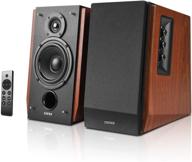
🔊 Edifier R1700BTs Active Bluetooth Bookshelf Speakers - High-quality Wireless Studio Monitor Speaker - 66w RMS with Subwoofer Line Out

67 Review
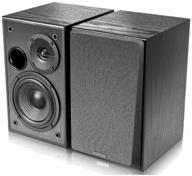
Computer acoustics Edifier R1100 dark wood

48 Review
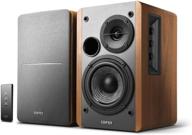
Edifier R1280T Active Bookshelf Speakers - 2.0 Stereo Near Field Monitors - Wooden Enclosure - 42 Watts RMS - Ideal for Studio Monitoring

65 Review
Another interesting products
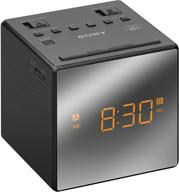
Sony ICFC1TBLACK Alarm Clock Radio

11 Review

Radio receiver Max MR-322 anthracite

14 Review

JBL Horizon Bluetooth Alarm Clock Radio with Multiple Alarms, Soothing Ambient LED Light, Automatic LCD Display, and Dual USB Charging (White, AM/FM Radio)

41 Review
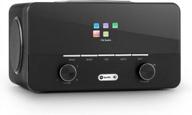
AUNA Connect 150 Black 2.1 Wi-Fi Internet Radio Music Player With MP3 USB Port, AUX & Remote Control - Black

16 Review

